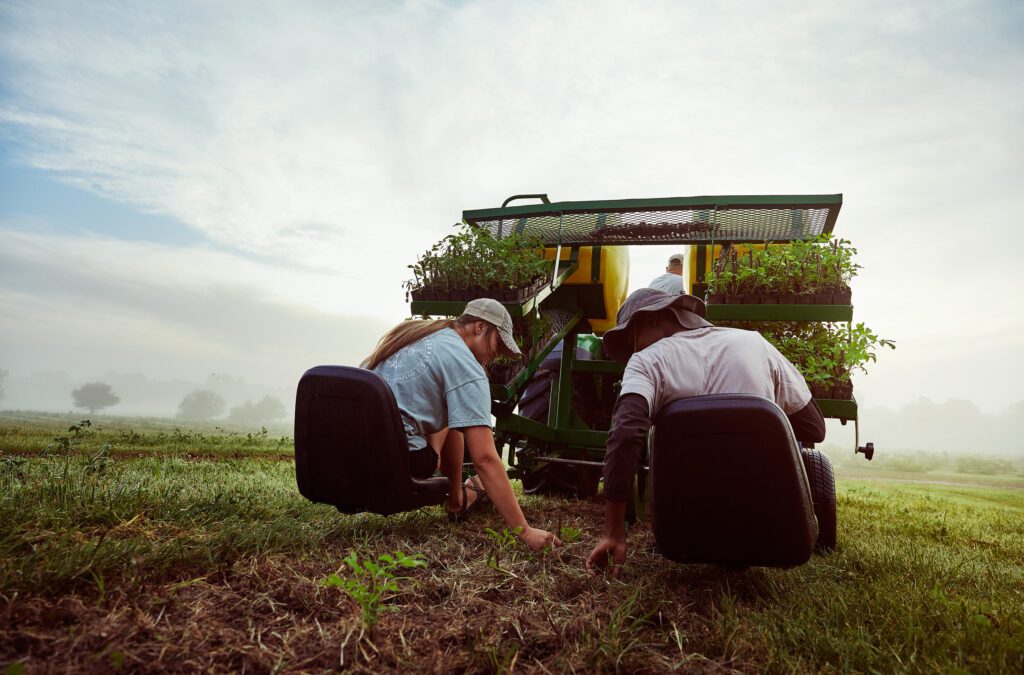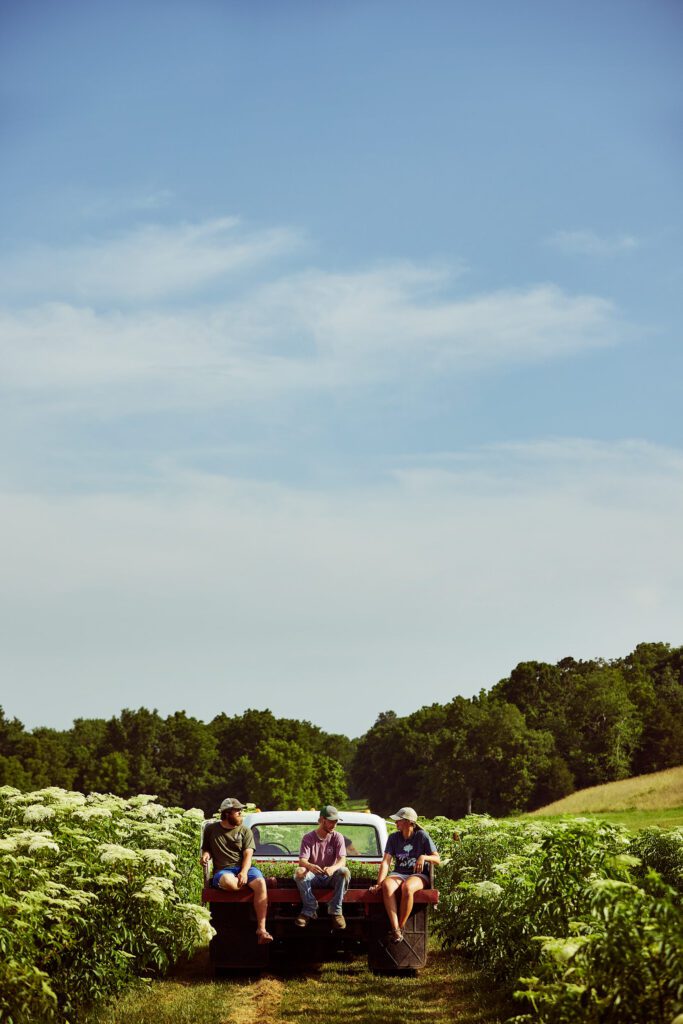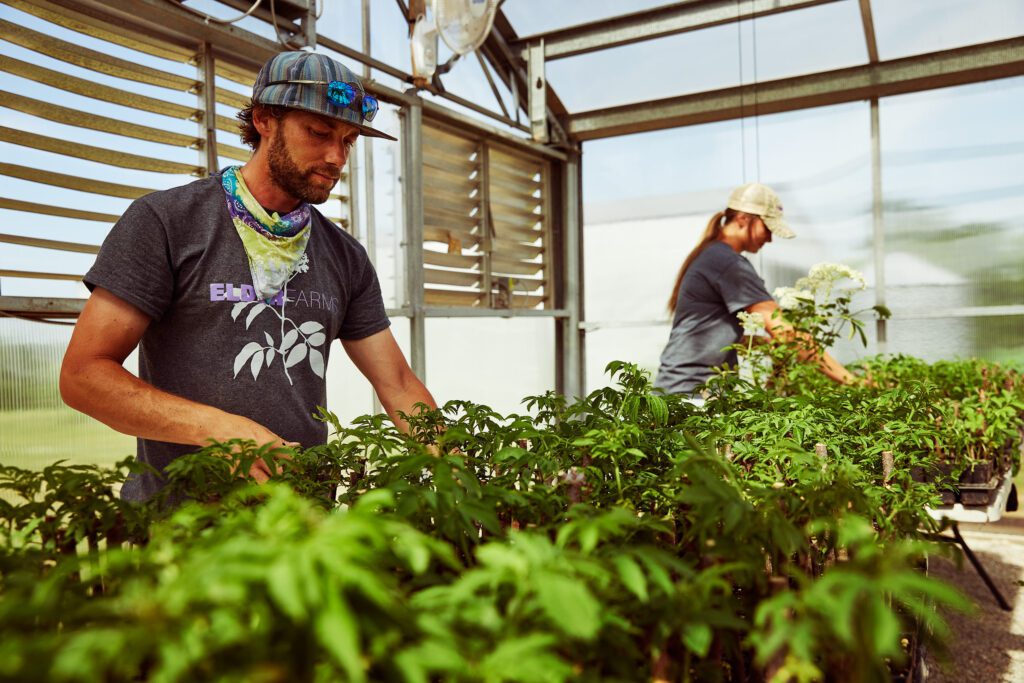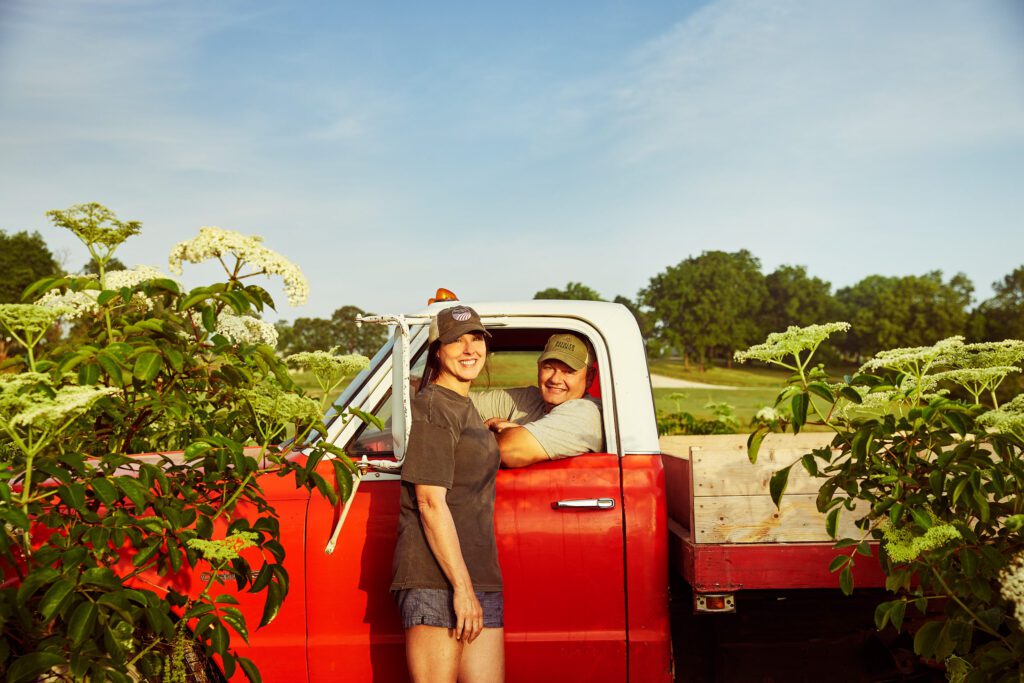Keeping our family farm going by growing and selling a unique perennial crop: elderberry
In 1899, John and Lucy Buehler homesteaded what is now Buehler Farms. They started farming row crops and dairy cattle, and our family continued that tradition for over a hundred years.
In 2011, though, my wife, Ann, and I — fourth-generation farmers on this land — realized that continuing row crop and dairy farming was not propelling us forward. We worried that our farm wouldn’t last another generation. Things had gone from bad to worse in 2007, when the recession hit and corn suddenly bottomed out. We made the decision to sell the dairy herd, but we didn’t want to end the life of farming we knew and loved. So, we began to research other crops and farming opportunities.
Why Elderberry?
I researched crops that are regenerative — that are good for the environment and for people. Both Ann and I are passionate about people and about the community we live in. Elderberry is an ancient crop — Hypocrites called it his “medicine cabinet.” It is native to the North American continent and is a hardy and prolific shrub. It has been used by both Europeans and Native Americans as a remedy for illness, due to its antiviral, anti-inflammatory and highly antioxidant properties.

Elderberry was the crop we had been looking for — a crop that was sustainable, environmentally sound and regenerative, and that yielded a product that could be used for wellbeing. Sambucus canadensis (American elderberry) is a perennial deciduous shrub that is hardy and that can thrive under the worst of conditions.

We decided to plant 10 acres of select varieties of elderberry. At that time, less than 800 acres of American elderberry were being grown, whereas Europe was growing over 30,000 acres. Europeans were centuries ahead of Americans in the elderberry game. They had research, production, marketing and products dialed in. Americans had been importing European elderberries for years.
Fortunately for us, a University of Missouri agricultural research farm is literally in our backyard — only three miles away, to be exact. Andy Thomas and Patrick Byers had already been growing experimental plots and working to encourage the development of this crop in the Ozarks as a viable, sustainable farm commodity. They had data and information, but they did not have markets or places for farmers to go with the elderberries they grew. Terry Durham, a pioneer in elderberry knowledge, was also a huge source of information and helped me continue my journey of creating an elderberry farm.
I experimented with potted plants and individual cuttings, along with mulch and other weed barrier controls. I found a useful way to repurpose equipment used for other crops, and I developed my own no-till planting method.
Once we had plants in the ground, we had roughly two years to wait before the first harvest. I knew the data from the University of Missouri had projected the per-pound value of elderberries to be higher than my traditional row crops, but where or how would we sell that crop?
Ann has a history of autoimmune disorders that have impacted her health in a negative way. During her journey to better health, she began taking pressed elderberry juice because of its high antioxidant properties. She wasn’t a fan of the taste, though, no matter how good it was for her. The natural boost that elderberry provided for her and her family’s immune system was what she had hoped for in a farm crop, but the delivery of the available products, she felt, needed some work. She started experimenting with jellies, jams and syrups that were more palatable to her than straight pressed juice. It took almost two years to develop, but eventually we came out with our Elder Farms product line.
By this time, word had begun to circulate of our switch to elderberries and our ideas to create a product line. We took on local help to repurpose the milk barn into a Safe and Good manufacturing facility. We began to create Elder Farms Immune syrup and started attending local farmers markets. The product was authentic, local and organically grown, using organic ingredients, and was sweetened with raw honey instead of sugar. We had a purple bottle of gold. After receiving positive feedback, we decided to begin approaching local stores to become wholesalers.

I’ve learned a lot since planting those first 10 acres. We’ve expanded by two acres each year and have added more varieties of elderberry. As the farm grew, I knew we weren’t going to be able to sustain our product line with just our own acreage; we needed other farmers to grow us them so we could continue to grow the business. Ann and I also hoped that this could be a blessing for others — an enterprise small farmers could start with under five acres, make a solid profit, and expand if they chose. It could be a lower risk investment, with high profits within five years. I started talking with and educating other farmers on how elderberry could be an alternative to traditional farming.
I’ve now planted almost 200 acres in elderberry across the four-state region that supplies the Elder Farms line. Buehler Farms has almost 55 acres with eight varieties of elderberry in production. This doesn’t include our cutting and plant sales, which we ship across the U.S. Buehler Farms is a certified-organic nursery and offers support, planting guides and a plant warranty.
The Future of American Elderberry

We need more farmers to grow elderberries. American elderberry grown on American farms is a superior product. The University of Missouri has been awarded a $5 million research grant to propel the study of elderberry. This grant will cover all aspects of this new American agricultural opportunity, from health benefits to mechanization to plant breeding. European studies support so much of what we already know about this powerful berry. We believe that American varieties have a richer antioxidant profile.
At the current rate of consumption, it would take 25,000 acres of commercially grown elderberries to meet the demands of American elderberry consumers. We are attempting to create a viable American elderberry community that can supply the manufacturing demands of a natural, centuries-old plant-medicine. But more importantly, we want to educate small farmers on a sustainable and regenerative crop that they can grow on less than ten acres and support their family farm. We want to educate and teach farmers methods that will benefit the health and wellbeing of the consumers who choose to be knowledgeable about what they consume, and how it is grown and processed. We want to educate, propel and find ways to support the small American family farm.
We believe that farming in this post-pandemic era is more important than ever, and we want to be pioneers in helping other small farmers envision a new way of seeing their family farm.
David Buehler is a fourth-generation farmer. Learn more at buehlerorganics.com.















